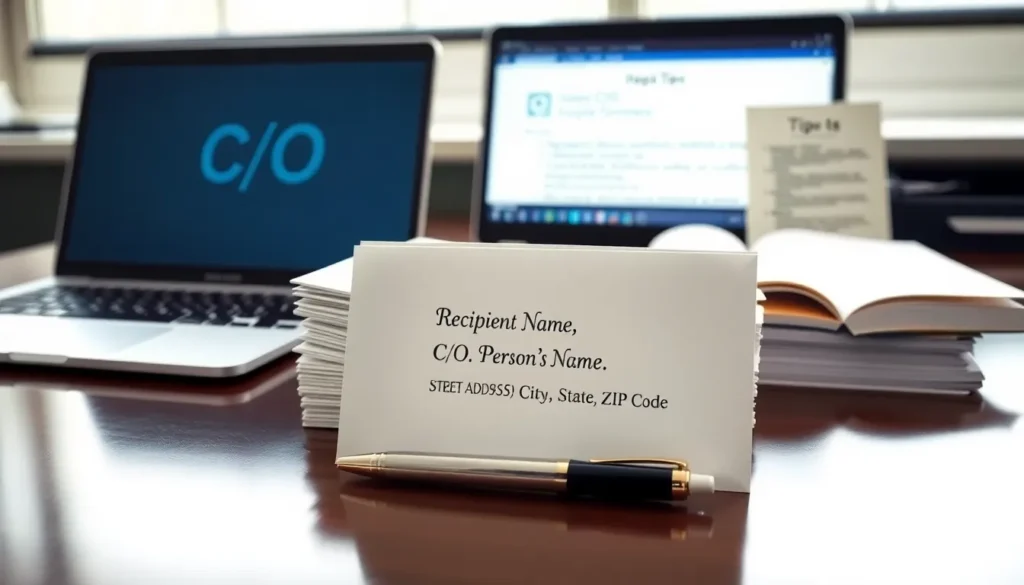Addressing envelopes can sometimes feel like solving a puzzle with missing pieces. Ever found yourself crossing out names and scribbling instructions? Enter C/O, the unsung hero of mail addressing. Whether you’re sending a love letter or a corporate proposal, understanding how to use C/O can save you both time and confusion. Let’s unravel this mystery together, shall we?
Table of Contents
ToggleUnderstanding C/O: Definition and Context

C/O stands for “care of.” This simple phrase is a powerful tool in the world of correspondence. It serves as a clear indicator that the mail is being sent to someone who does not typically reside at the stated address, ensuring that the intended recipient receives their mail even when they are temporarily housed elsewhere. It’s commonly used when individuals are staying with someone else, like at a friend’s house or a temporary address, and it can be very useful in professional settings as well. Overall, C/O is a handy abbreviation that adds clarity and structure to our mail addresses.
When To Use C/O in Addressing Mail
Knowing when to use C/O can make a real difference in ensuring your mail doesn’t end up lost. Here’s a quick guide:
How To Format C/O in Different Scenarios
When sending mail to someone c/o another person or organization, the format should be:
**Recipient Name
C/O Person’s Name
Street Address
City, State, ZIP Code**
For example:
Jane Smith
C/O John Doe
123 Main St
Anytown, ST 12345
C/O in Professional Correspondence
In the world of business, clarity is key. It’s crucial to ensure that mail reaches the correct department or individual when using C/O. Often, companies will have specific personnel handling correspondence. For instance:
**Business Name
C/O Department Head Name
123 Business Rd
Business City, ST 54321**
This format enhances professionalism and reduces miscommunication.
C/O for Personal Letters and Packages
Sending personal parcels and letters with C/O is just as straightforward. It’s a simple way to ensure that the mail reaches its final destination, especially if the recipient is temporarily residing away from home. Just remember to follow the same structure so that nobody is left wondering where their package went.
Common Mistakes to Avoid When Using C/O
Even the most seasoned mail senders can trip over the simple C/O if they’re not careful. Here are the most common mistakes to steer clear of:
- Forgetting the C/O: Skipping the C/O is the fastest way to confuse the postal service. Always include it when relevant.
- Incorrect Formatting: Mixing up lines or ignoring the proper address structure can lead to delays. Stick with the prescribed format.
- Using C/O for Permanent Arrangements: C/O is meant for temporary situations. If your friend has permanently moved in, use their name directly on the envelope.
- Vague Addresses: Including too much information can muddle addresses. Keep it simple: less is often more.
By avoiding these common pitfalls, senders can ensure a smooth mailing process.
Alternative Uses of C/O in Different Contexts
C/O isn’t just limited to addressing mail. It finds its usage in other contexts as well. For instance:
- In Legal Documents: C/O can indicate the responsible party in contractual agreements, ensuring proper delivery of legal notices.
- In Package Deliveries: Many services encourage using C/O to ensure that deliveries reach the right hands, especially in shared living environments.
- In Online Orders: When placing an order online, using C/O helps avoid mix-ups, especially if orders are directed to a workplace or a friend’s address.








